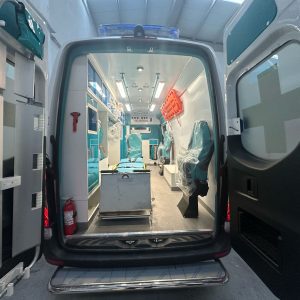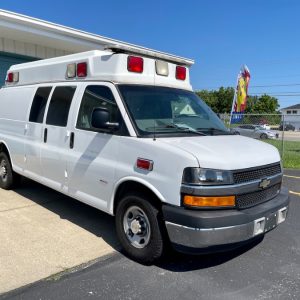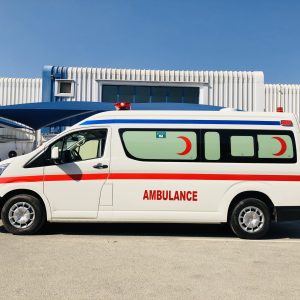1. Introduction to Cash-in-Transit Vehicles
Armored Ford Cash-in-Transit Vehicles; Cash-in-transit vehicles (CITVs) are money transfer vehicles that prioritize security to ensure the safe transportation of cash and other valuable assets. Security and cash logistics are extremely important and have become a part of everyday life in many societies where cash handling is still prevalent. These vehicles have lockable cash compartments, secure safes, and additional features to resist bullet firing, manual attacks, as well as attacks by gas and explosives. The primary goal in designing and executing CIT is to reduce the prospect of crime and the risk of severe threats to both the transported values and the people involved in their entire supply chain, which varies in different countries and jurisdictions. CITVs are designed with special safety features such as ballistic panels, strong locks, and a variety of security and anti-bandit equipment that might be helpful for a specific trip. They are generally high-security, high-quality, and strong commercial vehicles or minivans installed with state-of-the-art security systems. Without such advanced security systems, even the best driver could face an unexpected ambush during a CIT operation. It is important to bypass any obstacle and quickly save lives as well as cash, checks, and other valuable goods. New and continuously advanced security technologies are often equipped with most CITs to enhance their initial built-in safety. The advanced communication and location systems inside CIT vehicles help organizations monitor the position of valuable assets in real-time and quickly and effectively respond to threats and risks faced by CIT personnel and assets.
2. Importance of Armored Vehicles in Cash Transportation
Armored cash-in-transit vehicles present enormous benefits in securely carrying and transporting a large sum of money and other valuable assets. Armored vehicles also provide benefits for banks, convenience stores, restaurants, gas stations, schools, and other institutions, as they reduce security threats like theft that employees and customers face during deposits in the parking lot from the lobby. Large businesses and organizations need to streamline cash flow, which requires faster bank deposits. In nearly every country, there are laws and regulations that govern the transport of currency and other valuables. The personnel tasked with this responsibility have to comply with these regulations. Most countries have regulations guarding against the unlawful trafficking of proceeds.
For physical cash to reach its intended destination, a network is required. ATMs are a secure and accurate way to get cash to a customer. It also calls for armored transport between the Federal Reserve System and financial centers, commercial banks, thrifts, and international carriers. Armored vehicles are used all the time to transport money internationally. Most of the U.S. armored cars do not carry cash, focusing instead on specialized operations such as ATM replenishment, cash collection, and so forth. Companies have an extensive fleet of armored vehicles. More than 6,000 armored vehicles are in service worldwide. In 2003, financial institutions and commercial companies invested about $2.4 billion in private armored vehicles in the U.S. In all cases in which an insured Federal Reserve facility must comply with non-Federal Reserve facility regulations on deposits and other account transactions, the armored cashers for the masses of currency listed above must be, respectively, packs and janitors as collateral.
3. Ford’s Contribution to Armored Vehicle Industry
Ford Motor Company is known for producing civilian vehicles, pickups, and trucks, as well as military trucks and aircraft engines. From 1917 to 1923, Ford’s assembly line produced the Ford T Ambulance, introduced as “a new era in Armored Car.” In the post-war period, the American car manufacturer continued to propose Ford T variations as chassis 1-ton truck or 2-ton machine gun motor truck “for armored car work.” In 1923, Ford launched the first production version of its true phosphor armored cars; these vehicles had little in common with the later cash-in-transit.
Ford liberated its F550 Super Duty series of chassis to neutral builders as cash-in-transit. It should be mentioned that Super Duty was promoted and used as a fire fighting or emergency vehicle. The Super Duty vehicles were built on the heavy-duty chassis of Ford since 1998. This seems to be the first municipality build related to Ford in Mexico. These manufacturers usually go unnoticed as they are mostly local builders with little less than 100 units in production per year. However, Ford has a significant impact on the market of cash-van cars because of their engineering. Ford has obliged the manufacturers with whom it utilizes its name to build the vehicle so that it meets a 3 influenced by Ford safety standards and meets FMVSS requirements. Ford has offered vehicles in dual shells or partition designs, where customers can choose between the standard doors or modified designs. Ford has previously offered a number of different engines according to the weight requirements of the medium duty. Additionally, the units were built in various emission levels depending on the laws in different regions. Some examples of engines are the diesel 6.7L Power Stroke V-8 Turbo and 7.3L OHV PFI gasoline V-8. Ford received awards and recognition. In that section, the rear section of a vehicle can be separated as a cab from the cash area with these vehicles.
4. Key Features of Armored Ford Cash-in-Transit Vehicles
Ford hybrid cash-in-transit vehicles are extensively armored to provide a safe and secure environment for the carriage of valuable goods. The patented and unique armor assembly is based on the hybrid concept that overcomes the physical limitations of known prior art systems. The secret of the armor is the special combination of steel and composite panels that allows it to be curved over large spans at a very small radius. This significantly increases the strength and safety of the vehicle, which is specifically designed to fit in with internal design requirements of the OEM without significant changes to the original understructure of the vehicle. In addition, the unique design of the floor and ceiling sections pinches and locks the rollback and roof sections together when they are exposed, preventing any unwanted tampering from taking place. In contrast to the bulky mainframes used to support the flat hardened steel platforms employed by prior CI vehicle designs, the CI vehicle of the present invention is light and strong, using a minimum amount of armor to provide a similar level of protection.
The structure is designed to disperse the kinetic attack energy over the armor and to ensure safe conditions remain inside the vehicle. To further enhance safety, a non-compressible ballistics foam layer is bonded to the inside of the armor. This absorbs and reflects any remaining kinetic energy and also contains the fragments caused by penetration of the armor. A shaped and bent polycarbonate layer, called the tailor-made shooting window – a design unique to the present invention – is attached to the inside of the frames to form a completely watertight and tamper-resistant space. The windows are designed to fit the highly stressed shape of the hardened steel transparencies and to withstand continuous heavy abuse. Large overlapping curved antithetic panels feature a Velcro border that seeps behind the main panel and locks the window in place. The windows can be opened in several opening configurations to better fit clients’ requirements. Moreover, armored Ford hybrid cash-in-transit vehicles have several pyrotechnical devices installed in the vehicle interior. Upon activation by any one of the distribution of sensors placed in the vehicles, a harmless volume of pyrotechnical products is directed under the chassis of the vehicle. Upon the explosion of the harmless pyrotechnical product under the chassis, the convex floor section experiences a concaving movement, restoring the volume integrity by raising the floor section and sending the contents of the vehicle to a higher and safer position. This creates a barrier between the valuables in the vehicle and the interfering people on the outside. If a non-harmful concentration of pyrotechnical products is required, for example, for a fire suppression system in engine compartments, the divider can be activated in the same manner that activates the pyrotechnical products. In the present chair, the side and rear components witness similar convex content and floor sections.
4.1. Ballistic Protection Levels and Materials
Cargo and occupants are protected against firearms and explosive devices according to required threats using ballistic protection materials in the armor. Ford Cargo 2524M 6×2 trucks capable of carrying 8 to 12.5 tons of cargo payload with an armored cabin concept are designed respecting relevant ballistic and technical specifications and standards. Security measures are taken into consideration together with the client’s requests if required. Aside from the standard vehicle equipment, different balances requested according to the carrying capacity of the vehicle are designed with “run-flat” tires, diesel engine heaters, fire extinguishing systems, and all-terrain driving features.
Commercially produced fiberglass, plastic, Kevlar, and polyethylene-based composite hybrid armors are mainly used in the armored construction of the cabin and cargo body. The lamination process has been used to fix such materials to the steel. Deformations formed on the structure during the installation process have been prevented, and material transfer connections have become stronger by using this process for lamination. Special Kevlar fabric, which is produced from the combination of Kevlar and polyethylene, is effectively used on the bulletproof windows of the cabin. Especially designed bulletproof glasses are used on suitable vehicles according to the technical specifications and protection levels. The glasses are mainly connected with rubber separators and bushing systems. Before the installation process, a special assembly process has been applied that includes checking the structure and glass installation conformity of the vehicle again. Furthermore, Kevlar capsule materials are placed in particular in the gaps in the cabin, and then the lamination process is completed taking into account the characteristics of the material used. Such measures and materials aim to keep the glass and capsule together and to minimize the amount of glass and bullets that are shattered and sprayed around during the impact. In addition, the gaps between the walls of the armored cabin and the floor are filled with ballistic material.
4.2. Vehicle Customization Options
The basic design of the armored Ford cash-in-transit vehicle can be supplied as a fully built vehicle, or the customer may specify rear protective modular units with B6 (or lower) ballistic resistance level and a secured rear compartment with a bullet-resistant fuel tank, blast-protected spare wheel, one or two parcel trays protecting the radiator from theft, and a locking system for rear doors and/or rear compartment combined with an intercom system. Armored front seats may also be quickly dismountable armored carrier seats with a window gun port, ballistic protection covers for front and rear wheel arch cavities, front, side, and rear bullet-resistant transparent armor installed with a built-in locking system, and a public address system. Upon request, we can also provide the customer with a document holder. Other additional accessories included in the basic vehicle specification are designed and manufactured to the customer’s request and added to the vehicle as integrated solutions. The basic design of the armored Ford cash-in-transit vehicle can be fully built, or the customer can specify front protective modular units with B7 (or other) ballistic resistance level, powered or fixed bullet-resistant transparent armor for side and rear vehicle windows, back escape hatches for the driver and bodyguard, and an intercom system. The driver can also use a succession of driving operations, such as the insertion of a removable windscreen plug and an armored escape neck protected with high ballistic resistance to discretely extract funds. The armored Ford cash-in-transit has a chrome-plated finished pawl carrier to better transport and protect valuables. A drive-away interlock system between the cab and cargo compartments may privatize the passenger bay. The cash compartment door has also been completed with a key-operated unlocking device. Optional super-single wheels, dimensions, and specifications of the armored Ford cash-in-transit vehicle are available upon request.
4.3. Security Features: GPS Tracking, Alarm Systems, etc.
Security features: GPS tracking, alarm systems, etc. The armored Ford will regularly be fitted with tracking and security systems and will often carry large quantities of valuables. Accordingly, it makes sense for the cash transit company to install an adequate tracking and communication facility. As such, navigation devices and telephones connected via radio, cellular, or satellite technology are installed in the cabins. In addition to an automatic location report transmitted at regular intervals to the control center, the “panic button” call function is used, so that in case of a holdup, bank staff can react by switching to video surveillance. Another facility that we have been implementing at our customer’s request is an additional roof-mounted convoy rover with a camera for visual contact with the dashboard monitoring. The integrated alarm and panic system entered on the digital tachograph can report any faults that occur during the mission: skid protection, low air pressure, monitoring overheated brakes, drive errors, leaving the route, and not triggering the turn assistant for right-hand turns. All that is guaranteed by continued availability from service centers on the main routes.
4.4. Performance Specifications: Engine, Suspension, Brakes
The performance of the armored Ford in both traveling long distances and operating on highways and city streets is important. Special emphasis is given in the development of guard compartment design to enhance the overall performance of the guard force. Performance is also enhanced by the overall comfort of the cab of the vehicle, particularly over long periods of traveling. Engine, suspension, and brake power are selected to allow for reasonable per-mile and per-trip costs of any vehicle purchased. The vehicle will be operated throughout all of Canada and the continental United States. This factor has influenced the selection of the powering unit and related systems.
Armored Ford cash-in-transit vehicles are designed to be economical, safe, and reliable in their intended application. Many factors function together to produce a safe and reliable vehicle. None can be considered individually, and as such, the Ford is engineered and styled as a synchromesh drive vehicle. The need for gear shifting is eliminated, thus keeping safety and attention on driving conditions. Engine power is well balanced to the gross vehicle weight. This optimum engine power-to-weight ratio ensures maximum protection against slow acceleration, maximum hill climbing ability, and economical fuel consumption. For the purposes intended, semi-elliptic springs provide more experienced chassis engineering than any other form. The leaf spring is light in weight and maintenance-free. The custom contoured drum brakes provide effortless and smooth stopping ability that is felt at the drop of the pedal.
5. Case Studies and Real-World Applications
The following case studies are real examples of how Ford has assisted CIT companies and retail clients. They have utilized our high-volume market-entry AST vehicles to meet contracts requiring security-rated armored vehicles. During field operations, Ford has continued to refine features, mobility tactics, and industry operations as a result of working in these real-world missions. The variety of field operations we were fortunate to accompany has been invaluable in helping us to continue to advance the state of the art and keep within our Position Paper’s scope mindset.
Case Study 1: Established U.S. “Large” Fleet Customer
Mission: Head to/from bank location, picking up store money and delivering cash.
Notes: Game-changer example of a daily store-safe shipment completed in hours using an AST40 Long Lite vs. competitor trucks up to 1800-mile drives, 17-man day 2-4 day multi-trip, auction-shipment train. Saves retail location manpower for the next morning opening. Potential robbery events avoided due to delivery at 3 AM instead of broad daylight. Supported client contract to move to Fort Knox while employing strategies to assist the retail chain to save minimum viable work hours. Conduct a rare, atypical, lucrative large sum auction at a second remote location to bring the 1.75-man crew revenue facilitation rewards as much as 20% of the valuable savings over the long weekend. Conduct low-risk critical round put-away pick-up.
Case Study 2: COP; “Anti-Dollar”
Operation: Four successful armored car robberies blocked from execution due to the Long Lite vehicles’ intelligence, intimidation, and preemptive load planning option to facilitate change. Cash-in-transit companies only consider armored truck security enough if the operator can fly a private jet. Ford owners can only afford ATVs still. We try to be fair; it’s not a cop, cop’s gun, having a longer mobile grant, or future police availability to offer crystal clear safety benefits. It’s only our opinion from the analysis of three ADHDV experiments to triangulate the best info we have with the power to apply our previous spot-on armored trailers’ preemptions. A blend of art and science; it’s hard to negotiate to lean in the direction of hostile environments to save time. Compiled data:
• 935.952 miles at 300 MN; 35.976 gallons; testing speed is unnecessary, the longest one-way test was Cook County I-57, interstate, and highway paved sections. • 54.1 hours; real FTEC shifts do not deviate from 8-hour work rest recovery. DOT law is 14, but we trained an 8-hour CDL MED-02P-USA, requirement 9s; none of the 3 drivers were armored car drivers or security professionals. • 137 stops; mimicked armoring upon potential sell points only. • 37 kickoff locations; 15 potential sell-throughs, 3 team calculated mid-test loads (modified 14-liter truck to increase 45 bills per holding bin and all floor holding prior to meet all high-denomination test client contract deliverable of $80M in holding volume; $320 carrier coin). • Armored car robberies: realized $0 results on 4 test events because the cop only colored anti-dollar in the area. • Skipped major client ‘can’ locations, Tulsa and Wichita, excessively low density; the combined MSA population is only slightly greater than Omaha. • Reverse engineering of Fort Knox best in class USA standard bar list top deliverable, supplemental backup intel is listed.













